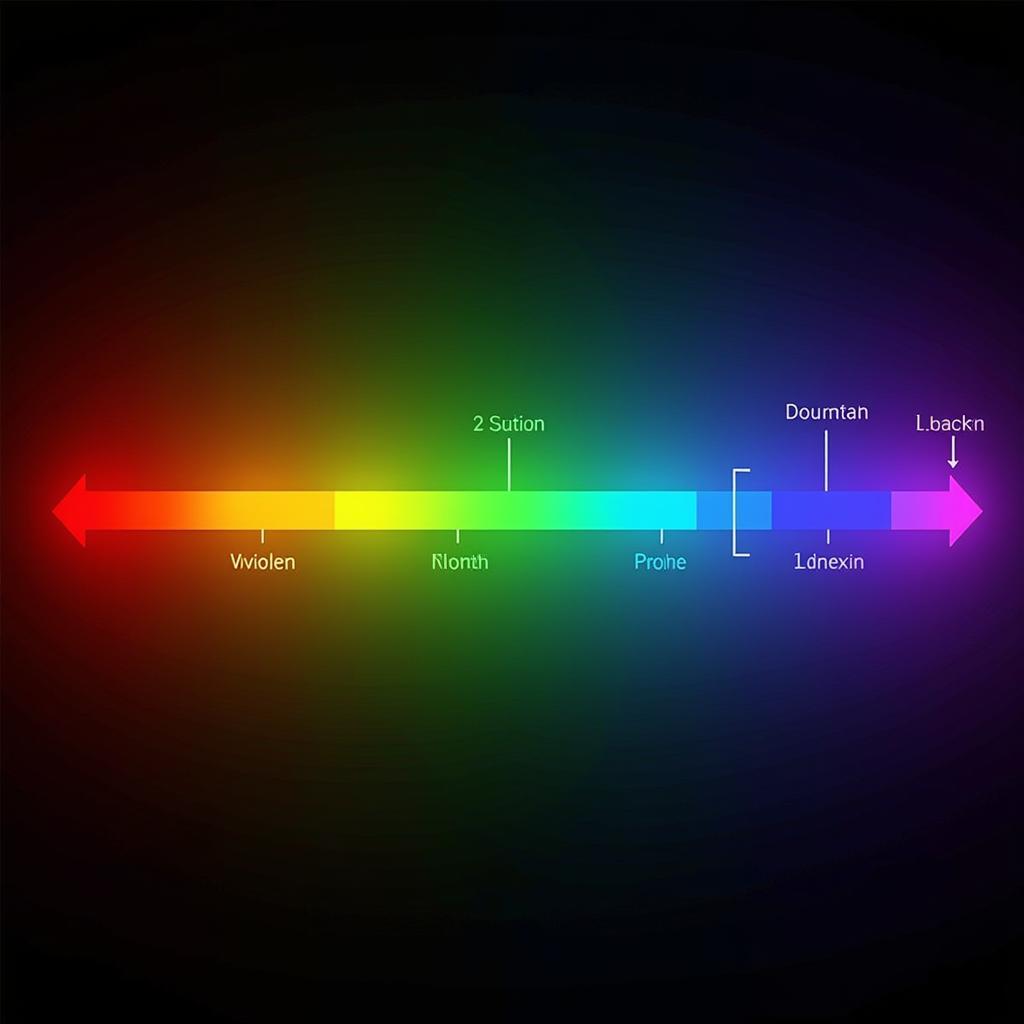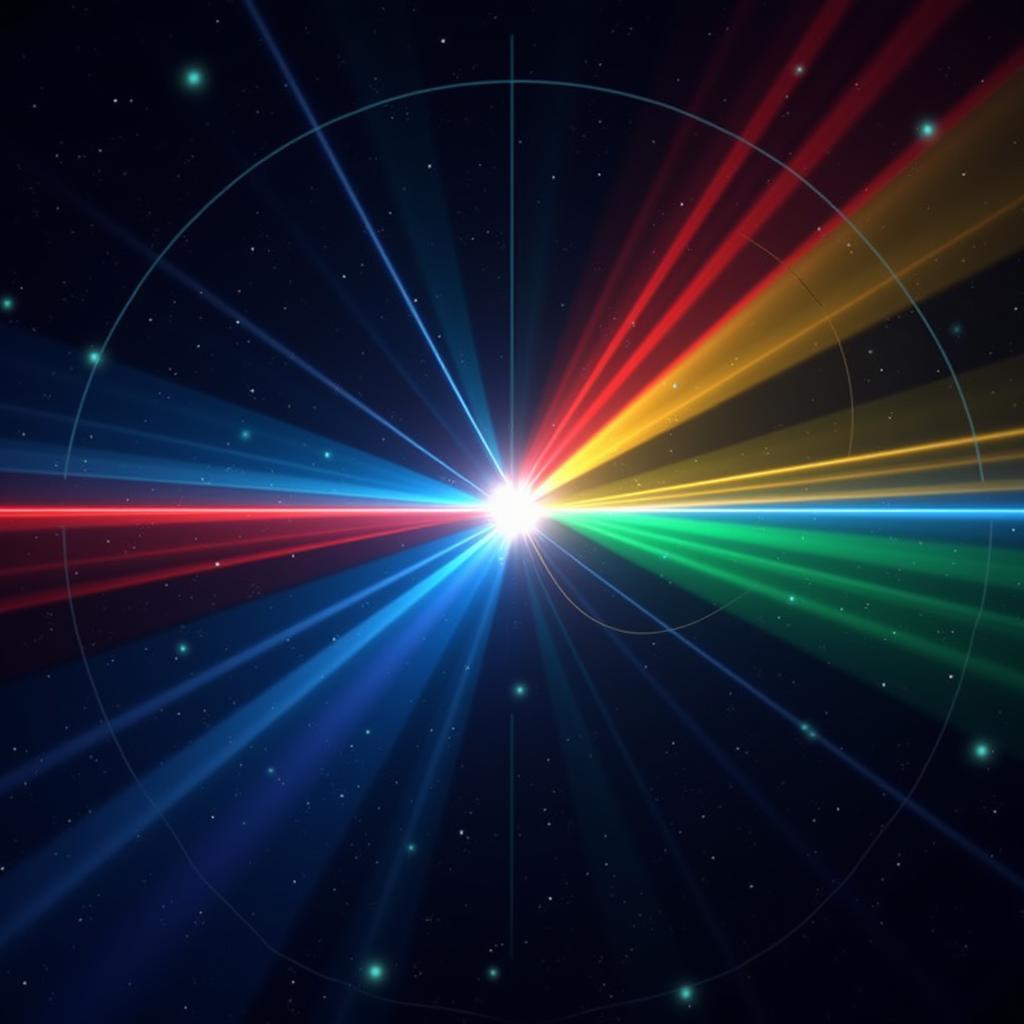Light, a fundamental aspect of our existence, is far more complex than what meets the eye. It’s not just about brightness; it’s about energy. So, what color light has the most energy? The answer lies in understanding the electromagnetic spectrum and the relationship between color, wavelength, and energy.
Violet light possesses the highest energy among the visible colors. This might seem counterintuitive, as we often associate brightness with higher energy. However, the energy of light is directly proportional to its frequency and inversely proportional to its wavelength. Violet light has the shortest wavelength and the highest frequency within the visible spectrum, giving it the most energy.
Understanding the Electromagnetic Spectrum
The electromagnetic spectrum encompasses all forms of electromagnetic radiation, ranging from radio waves with long wavelengths and low energy to gamma rays with short wavelengths and high energy. Visible light, the portion of the spectrum we can perceive with our eyes, is just a tiny sliver within this vast range. Within visible light, different colors correspond to different wavelengths and, consequently, different energy levels.
The Relationship Between Color, Wavelength, and Energy
As we move across the visible spectrum from red to violet, the wavelength decreases and the frequency increases. Red light has the longest wavelength and the lowest frequency, meaning it has the least energy. Conversely, violet light has the shortest wavelength and highest frequency, resulting in the highest energy. This principle is crucial in various fields, from physics and astronomy to medicine and art. Understanding the energy levels of different colors allows us to harness their properties for different applications. For instance, high-energy ultraviolet light is used for sterilization, while lower-energy infrared light is used for thermal imaging. Similarly, understanding the energy of visible light helps us comprehend how we perceive color and how it interacts with the world around us.
 Visible Light Spectrum and Energy Levels
Visible Light Spectrum and Energy Levels
Comparing the Energy of Different Colors
Let’s compare the energy of a few colors within the visible spectrum:
- Red: Longest wavelength, lowest frequency, lowest energy.
- Green: Intermediate wavelength, intermediate frequency, intermediate energy.
- Blue: Shorter wavelength, higher frequency, higher energy.
- Violet: Shortest wavelength, highest frequency, highest energy.
This comparison clearly demonstrates the inverse relationship between wavelength and energy. As the wavelength decreases, the energy increases proportionally.
Why Does Violet Light Have the Most Energy?
The energy of a photon, the fundamental particle of light, is directly related to its frequency. The higher the frequency, the more energetic the photon. Since violet light has the highest frequency within the visible spectrum, it carries the most energy. This energy difference, while seemingly small within the visible spectrum, has significant implications in various scientific and technological applications. Understanding which color of visible light has the most energy is crucial in fields like photosynthesis, where specific wavelengths are absorbed by plants to drive chemical reactions. It’s also important in areas like laser technology, where different wavelengths are utilized for diverse purposes. If you’re curious about how colors are created and combined, you might find this article on how to make the color lime green interesting.
 Photon Energy and Wavelength Relationship
Photon Energy and Wavelength Relationship
Practical Applications of Light Energy
The varying energy levels of different colors have practical applications in various fields. For example:
- Solar Panels: Solar panels utilize the energy from sunlight, primarily from the higher-energy blue and violet wavelengths, to generate electricity.
- Photography: Different colors of light affect photographic film differently, influencing the final image.
- Lighting Design: Understanding the energy and properties of different colors allows for effective and aesthetically pleasing lighting designs.
- Medical Treatments: Specific wavelengths of light are used in various medical treatments, such as laser surgery and photodynamic therapy.
Dr. Anya Sharma, a renowned physicist specializing in optics, explains, “The energy of light is a fundamental concept that governs how we interact with the world. From the colors we see to the technologies we develop, understanding this principle is essential.”
which color of visible light has the most energy provides a deeper dive into this topic.
Conclusion
In conclusion, violet light has the most energy within the visible spectrum due to its short wavelength and high frequency. Understanding this principle is crucial in various fields and has significant practical applications. From harnessing solar energy to developing advanced medical treatments, the energy of light plays a vital role in shaping our world. Knowing what color light has the most energy unlocks a deeper understanding of the universe around us.
FAQ
- What is the electromagnetic spectrum?
- How is light energy measured?
- Does the brightness of light affect its energy?
- What are some examples of how light energy is used in everyday life?
- Why is violet light sometimes perceived as dimmer than other colors, despite having the highest energy?
- How does the energy of light relate to its temperature?
- What is the difference between visible light and other forms of electromagnetic radiation?
Have you ever wondered what is the message of the color purple? Explore the symbolism of colors on our website. You might also be interested in learning more about what color are tail lights.
For those interested in the artistic application of color, should have seen it in color chords offers a unique perspective.
Need help with your next painting project? Contact Color Box Hanoi at 0373298888, email us at [email protected], or visit our showroom at 86 Cau Giay, Hanoi. We have a 24/7 customer support team ready to assist you.

